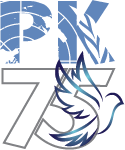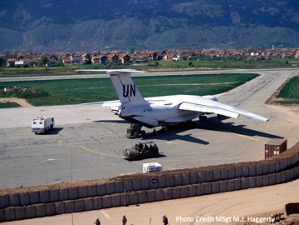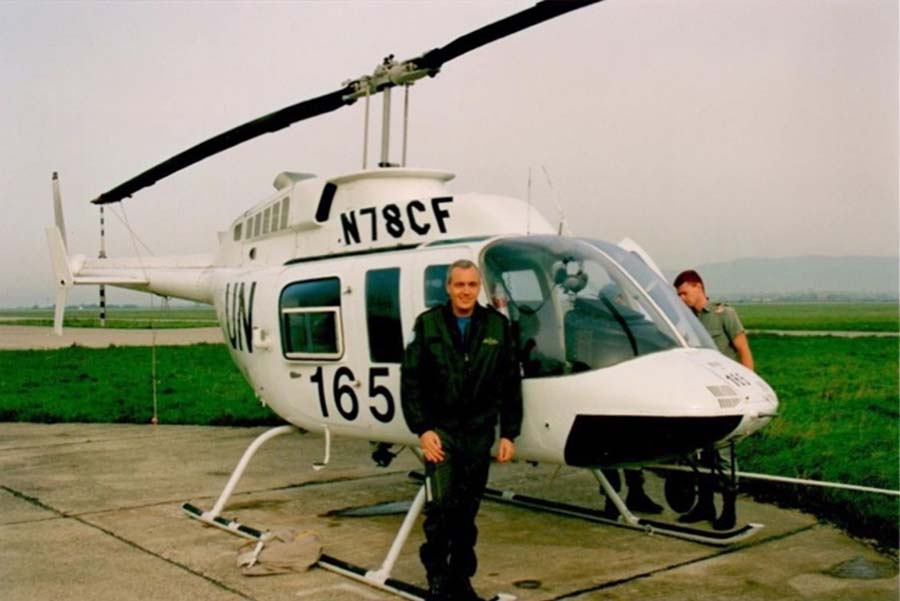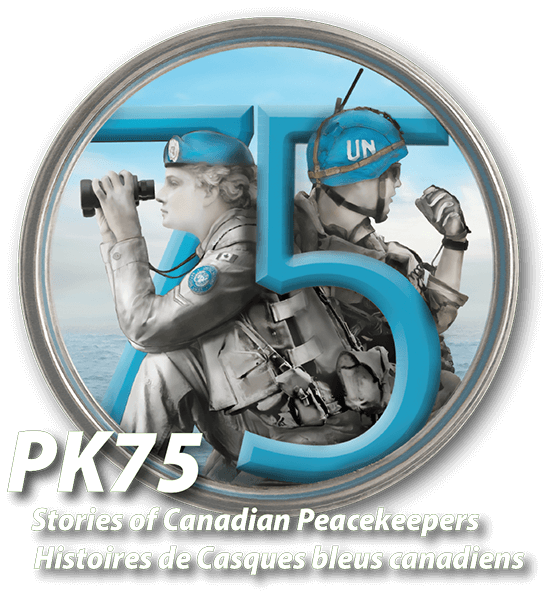

The basis of my selection for assignment to UNPROFOR was operational experience in Joint Warfare, Airspace Coordination, and Command and Control. Big in the news at the time was OPERATION DENY FLIGHT — NATO policing of a no-fly zone over Bosnia. Naturally, I assumed that with my operational fighter background, I would have some connection to this mission. I couldn’t have been more mistaken.
I arrived in Zagreb to learn that I, as a Major, and a Canadian Air Force Lieutenant Colonel, were to take charge of UNPROFOR Air Operations. Our assets were a unique outfit of contracted helicopters and transport aircraft, supporting 38,000 UN troops from many nations, throughout the Balkans. Our first place of business was a small office in UNPROFOR Headquarters, a communist era casern in downtown Zagreb, nowhere near the airport, nor our aircraft, nor our pilots. It was staffed with a handful of international officers who had only a vague idea of what they should be doing. My Boss assigned me the task of establishing an Operations Centre at the former Yugoslav Air Force Base “Pleso”, where our aircraft were stationed. Within a few weeks, with the help of imaginative UN Supply Technicians and Swedish Army Pioneers (builders and fabricators) the Ops Centre was up and running with satellite communications, multiple telephone lines, computers, a library of maps and publications, direct communication and visuals with aircraft dispatchers and the operating ramps, and duty officer sleeping quarters for a truly 24/7 operation. With two Canadians at the helm, we had additional operations officers from Argentina, Belgium, Denmark, France, Kenya, Norway, Poland, Russia, the U.S., and Canada. Truly a United Nations effort.
The nature of the operation was supporting UN ground forces throughout the Balkan Peninsula. To accomplish this, we had a fleet of civilian contracted tactical and heavy lift helicopters, and various sizes of fixed wing aircraft including the massive IL-76, which was the lifeline to Sarajevo, carrying up to 40 tons of supplies, ammunition, and troops. Sarajevo missions were challenging, with aggressive flight approach and departure profiles to minimize exposure to ground fire, and on one occasion, one of our aircraft encountered mortar fire either side of the runway during takeoff. Helicopter missions ranged from daily logistic shuttles between the UN Protection Areas, Command and Control, reconnaissance, search and rescue, and medevac. As a fighter pilot, I consider myself fortunate to have gotten many hours of hands-on flying in one of our Bell-206 “Long Rangers” helicopters. As Operations Officers our biggest role was liaison with all the warring factions to establish safe passage for our flights. This ranged from field level with domestic air defence units, to high level government representatives of all the factions of the former Yugoslavia.
One of my interesting roles was maintaining liaison with, and supplying intelligence to, our “cavalry to the rescue”. This was a U.S. Marine Corps attack helicopter squadron and a battalion of infantry based on the USS Guadalcanal “Landing Platform Helicopter”. I had the opportunity to visit the ship from time-to-time by flying out from Split, Croatia, but thankfully never had to call on their services. The other operational role I had as the Senior Operations Officer was to crew several operational missions, sometimes with the elation of saving lives, and others with the profound sadness of witnessing the horror of war. Far from home, and aching from missing family, we relished opportunities to raise our spirits, whether it was participating in a Christmas party for orphans, mingling with locals who didn’t always have the highest regard for the UN owing to suspicion that we were on one side or another, or observing the exploits of our entertaining collection of Russian transport pilots. With the senior UNPROFOR leadership, the representatives of the various factions, and our aircrews and maintainers, our Canadian flavoured Air Operations was held in high regard.
Biography
Originally from Lethbridge, AB, I launched in the direction of a military career through Air Cadets. I spent a summer of Senior Leaders’ training at CFB Borden, ON, and earned my gliding and power flight wings at CFB Penhold, AB. In my small Canadian Forces enrolment cohort for the Regular Officer Training Plan at CFB Calgary in 1974, there was one girl. Little did I know that, although she was off to Queen’s University in Kingston, and I to Royal Roads Military College in Victoria, she would one day be my partner for life! Incidentally, she became the first female commissioned Military Engineer in the Canadian Forces.
Following graduation from RMC in 1978, it was off to pilot training at CFB Moose Jaw, SK, where I was selected to stay on as an instructor after earning my wings. In 1983, I was thrilled to be assigned to 409 Nighthawk Squadron — the first operational CF-18 Squadron, based at Cold Lake, AB, where our two daughters were born. The 4th Allied Tactical Airforce in West Germany was desperate to add CF-18s to the order of battle as soon as possible, so 409 was relocated to Baden-Soellingen in 1985, and off we went with a one and one-half year old and a newborn. Following Europe, I was then posted to 410 Squadron back in Cold Lake as a CF-18 instructor, then to the year-long French course in Ottawa.
I then served three years at National Defence Headquarters on the Joint Staff in Planning. In April 1993, I was assigned to Peacekeeping duties with the United Nations Protection Force (UNPROFOR) in the former Yugoslavia, at the height of the 1993–94 hostilities. Following my year in the Balkans, I was then off to the USAF Command and Staff College (Class of ’95) in Montgomery Alabama, followed by a reprise Hornet posting to 410 Squadron Cold Lake. In 1997 I left the military. Following two years of commercial flying, I became a civilian contractor embedded back in NDHQ as a Project Support Specialist for CF-18 modernization — a ten-year engagement which led to various follow-on challenges in the aerospace industry. We lived in Canmore, AB, loving the mountains for 19 years, and now enjoy our retired life in Calgary to facilitate our Grandparenting priorities, and my volunteer work on the Board of Governors of the Corps of Commissionaires. I am also a docent at the Air Force Museum of Alberta. I am happily married to Major Dawn (Wakelam) Hunt (Retired), with whom I have two daughters and two granddaughters.

The lifeline to Sarajevo. The massive Russian-built IL-76 transport flew twice daily to Sarajevo as well as missions to Western Sahara and Georgia, carrying up to 40 tons of supplies, ammunition, and troops.

Fighter pilot takes on new role of “crewing” helicopters in support of varied UNPROFOR air operations. Shown here is the Bell 206 Long-Ranger used for logistic shuttles, liaison, Command and Control, reconnaissance, and medevac, based at Pleso Airfield Croatia.


